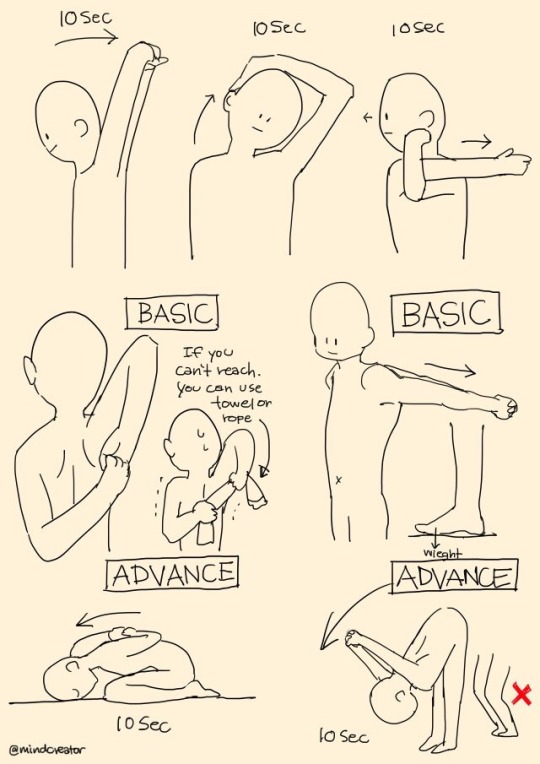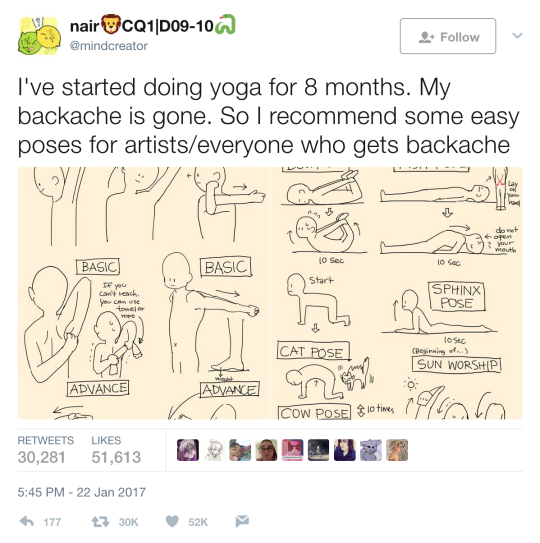Don't wanna be here? Send us removal request.
Text

common origins of suffering, euphoria, and ferret
substack
22K notes
·
View notes
Text
hot artists don't gatekeep
I've been resource gathering for YEARS so now I am going to share my dragons hoard
Floorplanner. Design and furnish a house for you to use for having a consistent background in your comic or anything! Free, you need an account, easy to use, and you can save multiple houses.
Comparing Heights. Input the heights of characters to see what the different is between them. Great for keeping consistency. Free.
Magma. Draw online with friends in real time. Great for practice or hanging out. Free, paid plan available, account preferred.
Smithsonian Open Access. Loads of free images. Free.
SketchDaily. Lots of pose references, massive library, is set on a timer so you can practice quick figure drawing. Free.
SculptGL. A sculpting tool which I am yet to master, but you should be able to make whatever 3d object you like with it. free.
Pexels. Free stock images. And the search engine is actually pretty good at pulling up what you want.
Figurosity. Great pose references, diverse body types, lots of "how to draw" videos directly on the site, the models are 3d and you can rotate the angle, but you can't make custom poses or edit body proportions. Free, account option, paid plans available.
Line of Action. More drawing references, this one also has a focus on expressions, hands/feet, animals, landscapes. Free.
Animal Photo. You pose a 3d skull model and select an animal species, and they give you a bunch of photo references for that animal at that angle. Super handy. Free.
Height Weight Chart. You ever see an OC listed as having a certain weight but then they look Wildly different than the number suggests? Well here's a site to avoid that! It shows real people at different weights and heights to give you a better idea of what these abstract numbers all look like. Free to use.
331K notes
·
View notes
Text
burning text gif maker
heart locket gif maker
minecraft advancement maker
minecraft logo font text generator w/assorted textures and pride flags
windows error message maker (win1.0-win11)
FromSoftware image macro generator (elden ring Noun Verbed text)
image to 3d effect gif
vaporwave image generator
microsoft wordart maker (REALLY annoying to use on mobile)
you're welcome
269K notes
·
View notes
Text
13K notes
·
View notes
Text
11K notes
·
View notes
Text
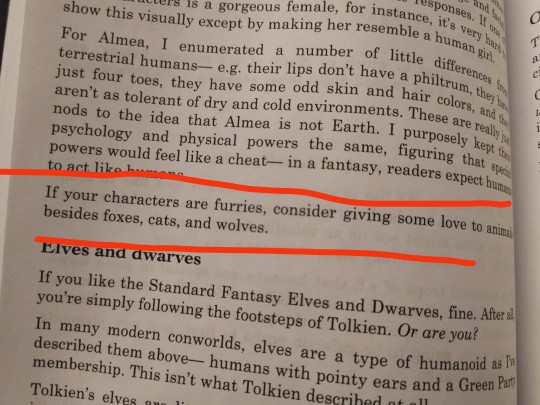
One thing I didn’t expect from my new worldbuilding book is the author, roughly my dad’s age, including his opinions on furries
121K notes
·
View notes
Text
How do you take a photo of time?
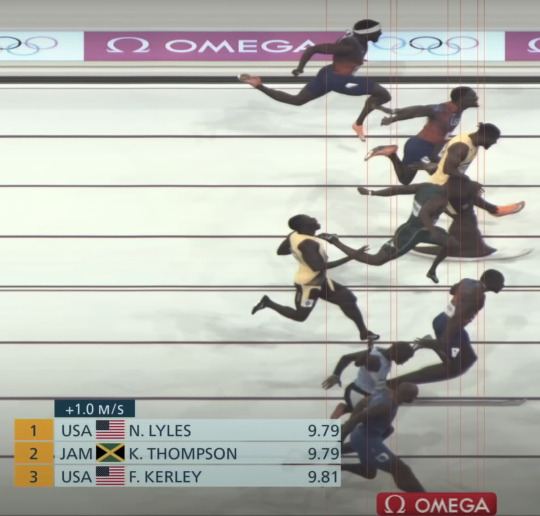
I've been watching the track events at the Olympics since I was a wee lad. It was a tradition in our family. We'd gather around our ancient low-definition 19 inch CRT television and watch tiny blobs compete against other tiny blobs and root for our country.
It was a bit like watching YouTube on your phone in 144p.
Several heroes emerged.
Jackie Joyner-Kersee was amazing.

You can't forget about Flo-Jo.

And then the Olympics decided NBA players were allowed in the competition.
Which formed... The Dream Team.
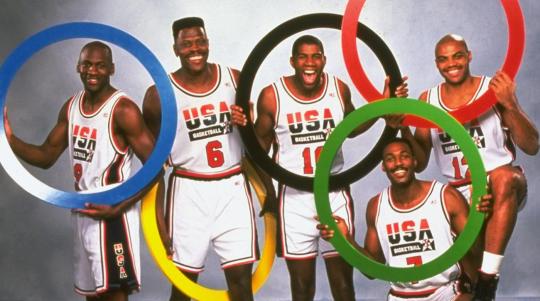
Was this fair?
Well... they won each game by an average of 44 points.
So... no. It was not fair.
Though it became more fair as time went on.
But, umm... yeah. The other teams looked like the Washington Generals and the US looked like the Harlem Globetrotters if they stopped screwing around half of the game.
But my absolute favorite Olympian was a runner named Michael Johnson.

He was cool as heck.
For one thing... gold shoes.
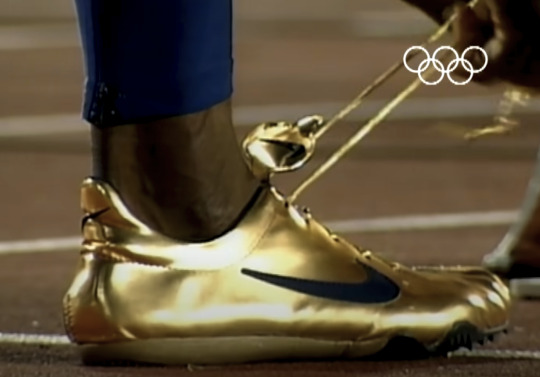
But he also had this crazy, upright, Tom Cruise-ish sprinting style that just made him look like a running robot on the track.

And in the 1996 Atlanta games he just trounced EVERYONE. I mean, it wasn't even close.
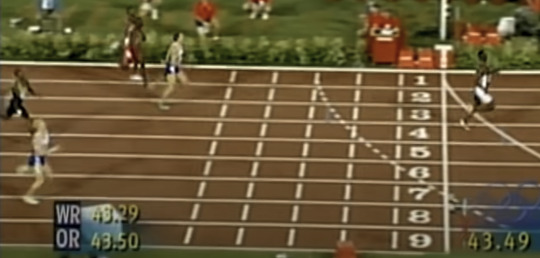
Yikes. Those losing blobs are probably really embarrassed.
Last night I decided to invigorate my nostalgia and watch the track events again. And I got to see one of the wildest races in history.
It didn't even last 10 seconds but it was one of the most exciting sporting events I've ever witnessed. Almost every runner won the race.
After I saw that initially, I was like... who the heck won???
Even in slow motion I wasn't sure.
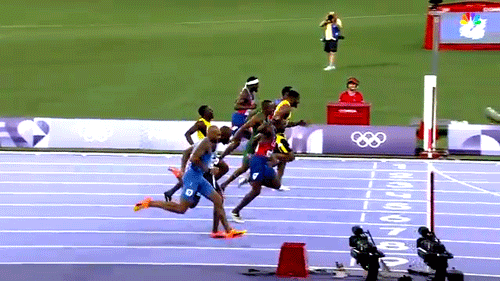
This was one of the closest finishes in history. There has never been a race where all 8 runners were within this margin.
The arena was silent as the winner was being confirmed. The runners just kind of paced around waiting for official word. My best guess was the Jamaican runner, Kishane Thompson. But then the loudspeaker announced Noah Lyles.

The last tiny morsel of American pride burst out of me with a big "Wooooo!"
I forgot what it was like to be proud of my country. I wish it happened more often. But this young man, despite being last place in the first 3rd of the race, turned on the afterburners and won in a photo finish.
And that's when my inner nerd took over.
Because when they showed the photo finish image, it looked super weird.
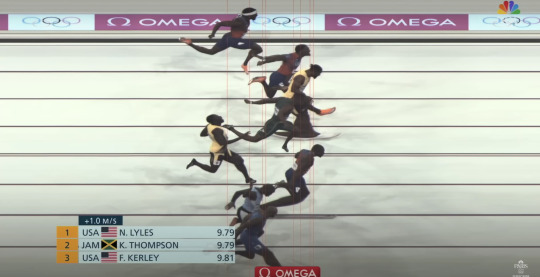
Why is the track white?
Why do all of the runners look all warpy like that QWOP game?

So I went down a research rabbit hole to figure this out.
Photo finishes are actually fascinating. The first photo finish captured the end of a horse race in 1890. But that was mostly luck and timing. The actual photo finish mechanisms weren't used until 1937.
Originally they would film the finish line through a physical slit.

And the first horsie head that appeared in that slit would be the winner. This technology ended a huge aspect of corruption in horse race fixing almost overnight.
But we have come a long way since then. And I'd like to introduce you to the Omega Scan 'O' Vision Ultimate.

This slow motion camera sits fixed on the finish line of every race. The concept of the photo finish has remained remarkably similar to the 1930s approach. The camera sensor is specially designed to only record a vertical slit.
Only the finish line itself is actually captured.
And because it limits what it records to only that slit, it can capture 40,000 frames per second to get amazing temporal resolution.
So why don't the photo finishes just look like, well... this?

That is because the camera takes a picture of time more-so than dimensional space. I guess it would be more accurate to say it *assembles* a picture of time.
As the runners cross the finish line, the camera combines all of the little strips of pictures into a single image.
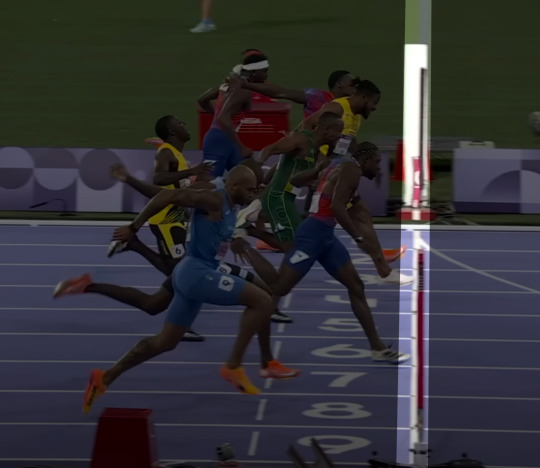





It's almost like if you tried to reassemble a piece of paper after it had been shredded.
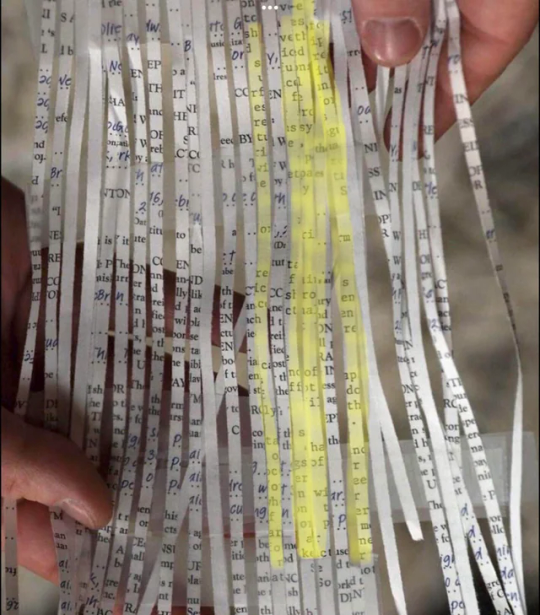
Imagine each strip of paper is a picture of ONLY the finish line, just at a slightly different point in time.
What if someone stopped on the finish line and didn't move... what would that look like?

Once they got there, the same part of their body would just be repeated.
So the right side of the photo finish picture represents earlier in time and it just assembles the image strip by strip as time passes and you literally get a picture of time itself.
NEAT!
Okay, but how do they determine the winner from the photo finish?
I mean, that shoe looks like it is ahead of Noah Lyles!
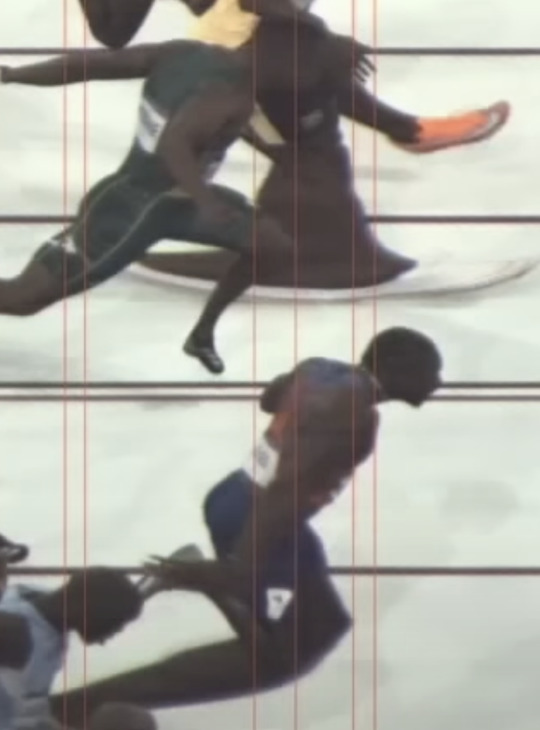
Clavicles!
The IAFF rules state the foremost part of the torso must cross the finish line first. And the endpoint of the torso is the outer end of the clavicle.
So if you get this bone across the finish line first, you win the race.
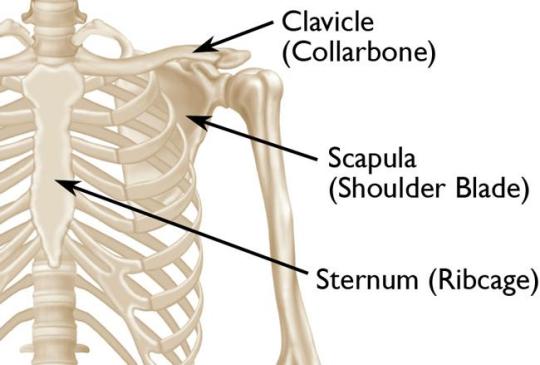
Two more fun facts!
The start of the race is actually just as carefully timed as the end of the race. There are sensors in the starting blocks of each runner.
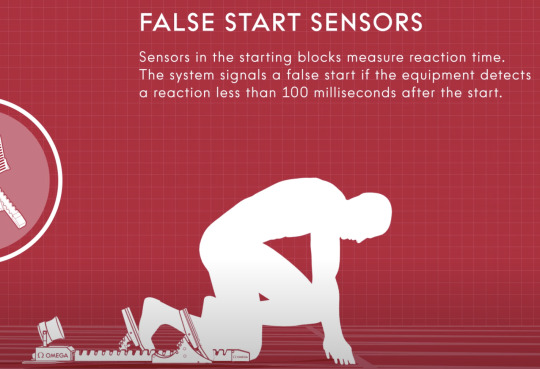
The starting gun also has an electronic sensor.
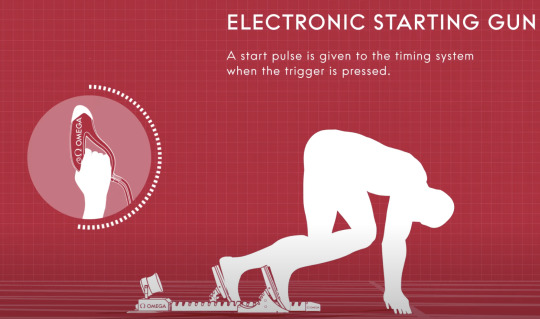
They have determined the fastest a human can react to the sound of a gun is roughly 100 milliseconds. So if you start running before 100 milliseconds they know you didn't actually hear the gun, you just got antsy and started running too early.
And the final fun fact...
Did you notice the Omega logo at the top of the photo finish?

That isn't superimposed or added after the fact. That is captured by the camera.
But if this image is composed only of tiny little slivers, how did they get the Omega logo to show up?

That is a little display. And it is synchronized with the Scan 'O' Vision Ultimate to show a little sliver of the Omega logo for each frame captured.

So when the final image is stitched together, it looks like a cohesive logo at the top of the photo.
Pretty clever, Omega!
26K notes
·
View notes
Text
Homemaking, gardening, and self-sufficiency resources that won't radicalize you into a hate group

It seems like self-sufficiency and homemaking skills are blowing up right now. With the COVID-19 pandemic and the current economic crisis, a lot of folks, especially young people, are looking to develop skills that will help them be a little bit less dependent on our consumerist economy. And I think that's generally a good thing. I think more of us should know how to cook a meal from scratch, grow our own vegetables, and mend our own clothes. Those are good skills to have.
Unfortunately, these "self-sufficiency" skills are often used as a recruiting tactic by white supremacists, TERFs, and other hate groups. They become a way to reconnect to or relive the "good old days," a romanticized (false) past before modern society and civil rights. And for a lot of people, these skills are inseparably connected to their politics and may even be used as a tool to indoctrinate new people.
In the spirit of building safe communities, here's a complete list of the safe resources I've found for learning homemaking, gardening, and related skills. Safe for me means queer- and trans-friendly, inclusive of different races and cultures, does not contain Christian preaching, and does not contain white supremacist or TERF dog whistles.
Homemaking/Housekeeping/Caring for your home:
Making It by Kelly Coyne and Erik Knutzen [book] (The big crunchy household DIY book; includes every level of self-sufficiency from making your own toothpaste and laundry soap to setting up raised beds to butchering a chicken. Authors are explicitly left-leaning.)
Safe and Sound: A Renter-Friendly Guide to Home Repair by Mercury Stardust [book] (A guide to simple home repair tasks, written with rentals in mind; very compassionate and accessible language.)
How To Keep House While Drowning by KC Davis [book] (The book about cleaning and housework for people who get overwhelmed by cleaning and housework, based on the premise that messiness is not a moral failing; disability and neurodivergence friendly; genuinely changed how I approach cleaning tasks.)
Gardening
Rebel Gardening by Alessandro Vitale [book] (Really great introduction to urban gardening; explicitly discusses renter-friendly garden designs in small spaces; lots of DIY solutions using recycled materials; note that the author lives in England, so check if plants are invasive in your area before putting them in the ground.)
Country/Rural Living:
Woodsqueer by Gretchen Legler [book] (Memoir of a lesbian who lives and works on a rural farm in Maine with her wife; does a good job of showing what it's like to be queer in a rural space; CW for mentions of domestic violence, infidelity/cheating, and internalized homophobia)
"Debunking the Off-Grid Fantasy" by Maggie Mae Fish [video essay] (Deconstructs the off-grid lifestyle and the myth of self-reliance)
Sewing/Mending:
Annika Victoria [YouTube channel] (No longer active, but their videos are still a great resource for anyone learning to sew; check out the beginner project playlist to start. This is where I learned a lot of what I know about sewing.)
Make, Sew, and Mend by Bernadette Banner [book] (A very thorough written introduction to hand-sewing, written by a clothing historian; lots of fun garment history facts; explicitly inclusive of BIPOC, queer, and trans sewists.)
Sustainability/Land Stewardship
Braiding Sweetgrass by Robin Wall Kimmerer [book] (Most of you have probably already read this one or had it recommended to you, but it really is that good; excellent example of how traditional animist beliefs -- in this case, indigenous American beliefs -- can exist in healthy symbiosis with science; more philosophy than how-to, but a great foundational resource.)
Wild Witchcraft by Rebecca Beyer [book] (This one is for my fellow witches; one of my favorite witchcraft books, and an excellent example of a place-based practice deeply rooted in the land.)
Avoiding the "Crunchy to Alt Right Pipeline"
Note: the "crunchy to alt-right pipeline" is a term used to describe how white supremacists and other far right groups use "crunchy" spaces (i.e., spaces dedicated to farming, homemaking, alternative medicine, simple living/slow living, etc.) to recruit and indoctrinate people into their movements. Knowing how this recruitment works can help you recognize it when you do encounter it and avoid being influenced by it.
"The Crunchy-to-Alt-Right Pipeline" by Kathleen Belew [magazine article] (Good, short introduction to this issue and its history.)
Sisters in Hate by Seyward Darby (I feel like I need to give a content warning: this book contains explicit descriptions of racism, white supremacy, and Neo Nazis, and it's a very difficult read, but it really is a great, in-depth breakdown of the role women play in the alt-right; also explicitly addresses the crunchy to alt-right pipeline.)
These are just the resources I've personally found helpful, so if anyone else has any they want to add, please, please do!
36K notes
·
View notes
Text
By the way, you can improve your executive function. You can literally build it like a muscle.
Yes, even if you're neurodivergent. I don't have ADHD, but it is allegedly a thing with ADHD as well. And I am autistic, and after a bunch of nerve damage (severe enough that I was basically housebound for 6 months), I had to completely rebuild my ability to get my brain to Do Things from what felt like nearly scratch.
This is specifically from ADDitude magazine, so written specifically for ADHD (and while focused in large part on kids, also definitely includes adults and adult activities):
Here's a link on this for autism (though as an editor wow did that title need an editor lol):
Resources on this aren't great because they're mainly aimed at neurotypical therapists or parents of neurdivergent children. There's worksheets you can do that help a lot too or thought work you can do to sort of build the neuro-infrastructure for tasks.
But a lot of the stuff is just like. fun. Pulling from both the first article and my own experience:
Play games or video games where you have to make a lot of decisions. Literally go make a ton of picrews or do online dress-up dolls if you like. It helped me.
Art, especially forms of art that require patience, planning ahead, or in contrast improvisation
Listening to longform storytelling without visuals, e.g. just listening regularly to audiobooks or narrative podcasts, etc.
Meditation
Martial arts
Sports in general
Board games like chess or Catan (I actually found a big list of what board games are good for building what executive functioning skills here)
Woodworking
Cooking
If you're bad at time management play games or video games with a bunch of timers
Things can be easier. You might always have a disability around this (I certainly always will), but it can be easier. You do not have to be this stuck forever.
76K notes
·
View notes
Text
Please fucking lie to your employer. Like they don’t need to know your mental health issues or what drugs you do. Ffs
263K notes
·
View notes
Text
(Oh right also some of the worst words I could find (useful for testing) were strengths, preempts, glimpsed, prompts, scrounged, sixths, and texts)
"Ma'am, your penis is barking"

3K notes
·
View notes
Text
Hey! So I've been following the development of this as I actually started working on my own script myself that started out similar to korean hangul about a month ago? before I eventually decided to try georgian with diacritics (rather than adjoined components), and then I thought of how much it started to look like alchemical symbols, and then after I compiled a few lists of symbols that I began to try to categorize by components I noticed yours and decided to stop lmao
Aaaanyway I have a bachelor's degree in computer science and to help me I wrote some code to work out which consonant pairings and diphthongs were most frequent. Diphthongs honestly aren't too tricky, but in terms of frequency the top 10 were:
/eɪ/ - 31.01%
/aɪ/ - 25.22%
/oʊ/ - 22.35%
/aʊ/ - 7.06%
/iə/ - 3.37%
/ɔɪ/ - 1.67%
/uɛ/ - 1.26%
/ɪə/ - 1.20%
/ie/ - 1.17%
/io/ - 0.78%
Consonants, which are far more dense in English had these as the top 50:
/nd/ - 11.15%
/st/ - 8.05%
/nt/ - 6.67%
/pr/ - 3.94%
/ts/ - 3.78%
/ks/ - 3.47%
/tr/ - 2.88%
/ns/ - 2.75%
/kt/ - 2.50%
/nz/ - 2.10%
/rt/ - 2.07%
/fr/ - 1.74%
/pl/ - 1.70%
/sp/ - 1.63%
/hw/ - 1.52%
/lz/ - 1.52%
/mp/ - 1.46%
/gr/ - 1.44%
/kl/ - 1.42%
/kr/ - 1.35%
/sk/ - 1.32%
/nj/ - 1.15%
/rd/ - 1.01%
/kw/ - 1.00%
/dz/ - 0.98%
/mz/ - 0.89%
/kʃ/ - 0.88%
/ld/ - 0.87%
/br/ - 0.83%
/bl/ - 0.83%
/rm/ - 0.78%
/lt/ - 0.78%
/ŋk/ - 0.75%
/dr/ - 0.64%
/rk/ - 0.61%
/nl/ - 0.61%
/nf/ - 0.61%
/vj/ - 0.53%
/nʃ/ - 0.52%
/rz/ - 0.51%
/nʤ/ - 0.50%
/mj/ - 0.48%
/kj/ - 0.48%
/fl/ - 0.47%
/ft/ - 0.46%
/rs/ - 0.45%
/lj/ - 0.43%
/zn/ - 0.43%
/zd/ - 0.42%
/ps/ - 0.42%
These are all generated from an IPA translation (replacing /tʃ/ and /dʒ/ with the single character equivalent) of the CMU pronouncing dictionary, weighted by frequency of usage. Presumably some dialectal variation is not being included, but in case it is at all useful to you I figured I'd share some of my findings.
"Ma'am, your penis is barking"

3K notes
·
View notes
Text
249K notes
·
View notes
Text
I made Hungarian mushroom soup and it's a little too delicious to be real

42K notes
·
View notes
